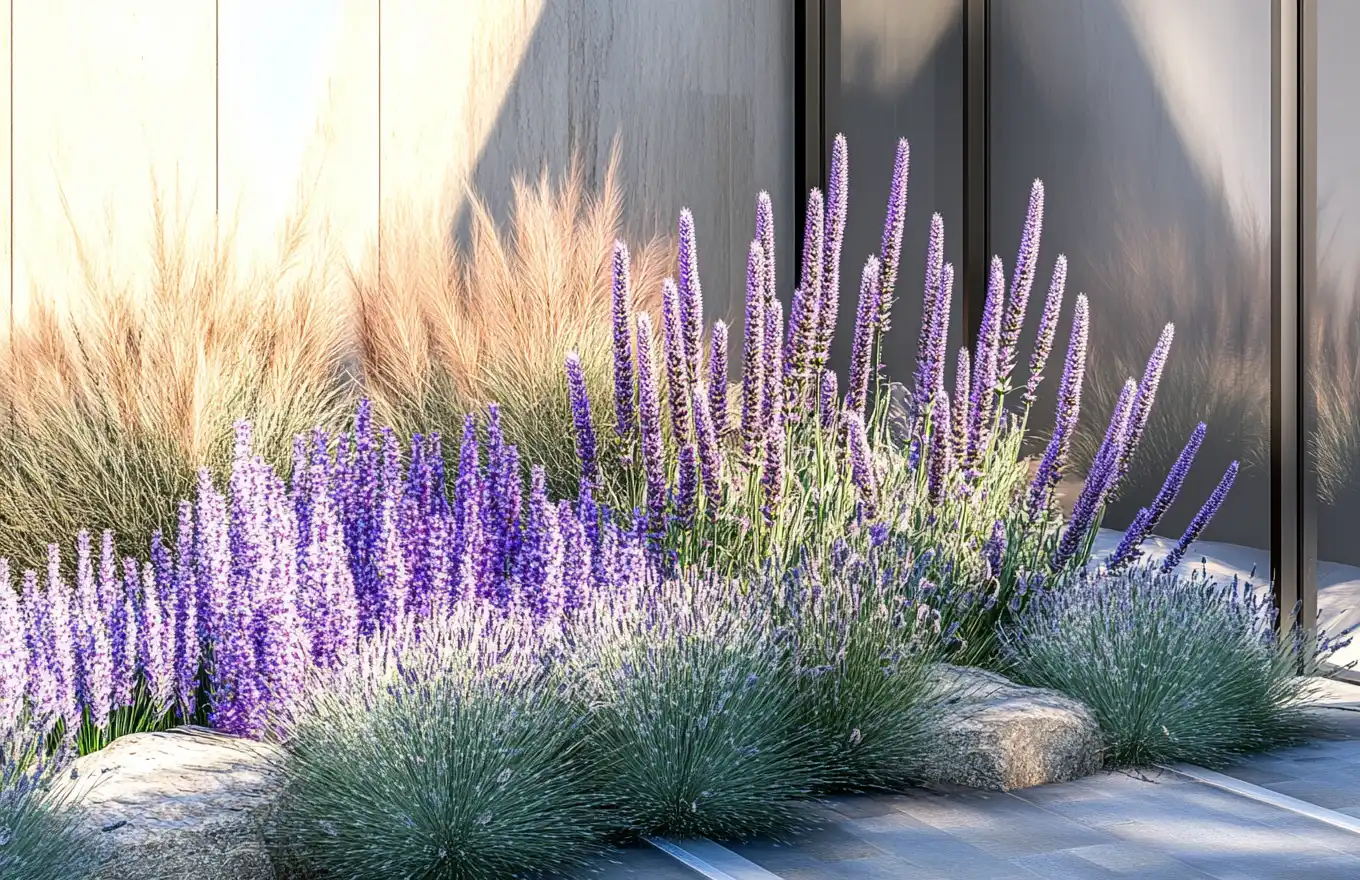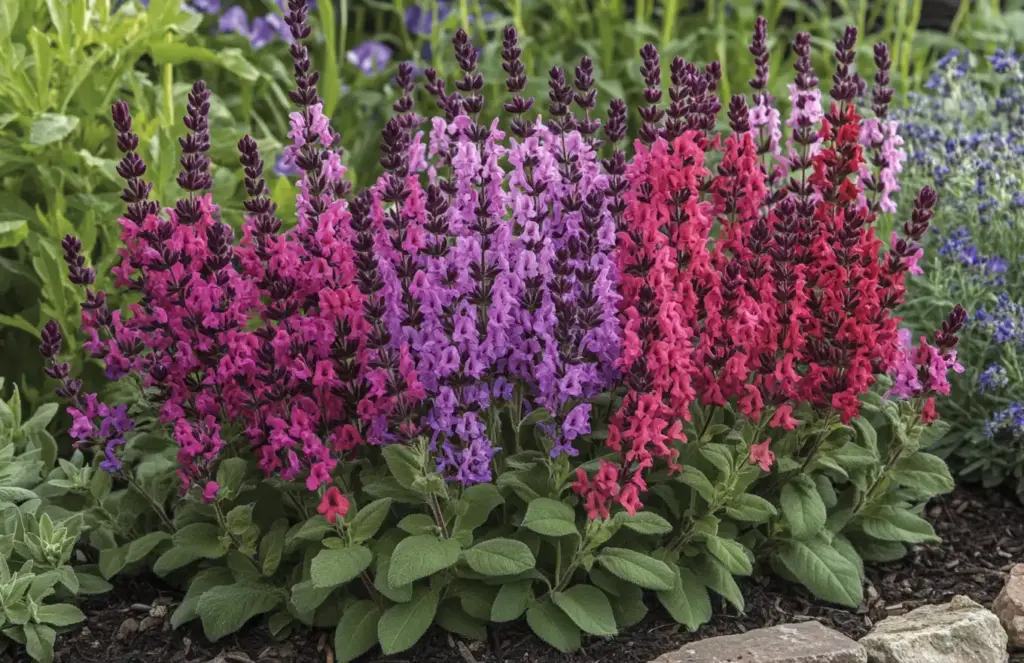Salvia plant care is simpler than you might think—and the reward is a garden bursting with color, fragrance, and pollinator activity. Whether you’re growing them for their striking blooms or their culinary and medicinal benefits, salvia plants are a favorite among gardeners of all skill levels. With over 900 species in the Salvia genus, ranging from ornamental varieties to useful herbs like common sage, this diverse family fits beautifully into any garden setting—from cottage-inspired flower beds to sun-drenched pollinator zones.
In this guide, we’ll explore everything you need to know about salvia plant care—from choosing the right variety for your climate to mastering watering, pruning, and even propagation. Whether you’re working in containers or designing a lush full-sun garden, with the right techniques and growing conditions, your salvias can flourish year after year in a vibrant, low-maintenance landscape.
Table of Contents
🌱 1. Understanding Salvia Plants
The salvia plant belongs to the mint family (Lamiaceae) and includes an incredibly diverse genus with over 900 known species. These range from hardy perennials and compact shrubs to short-lived annuals. This diversity makes salvia an adaptable and valuable addition to almost any garden setting.
Despite their differences in form and color, most salvias share some common traits: square stems, aromatic leaves, and tubular flowers that attract pollinators like bees, butterflies, and hummingbirds. Their blooms come in a range of colors—deep purples, fiery reds, cool blues, and bright whites—providing seasonal interest and curb appeal.
Popular Types of Salvia Plants
Here are a few widely grown varieties that highlight the versatility of this genus:
- Common Sage (Salvia officinalis): A culinary favorite with grey-green leaves and pale flowers. It’s both decorative and edible.
- Scarlet Sage (Salvia splendens): Known for its bright red flowers, this annual is often used for seasonal color in flower beds.
- Woodland Sage (Salvia nemorosa): A tough perennial with purple spikes, perfect for borders and pollinator gardens.
- Tropical Sage (Salvia coccinea): A heat-loving species that thrives in warmer climates, popular in butterfly gardens.
Each salvia species has its own ideal growing conditions and characteristics. Understanding what makes your chosen type thrive will lay the foundation for long-term success in your garden.
🌼 2. How to Select the Right Salvia
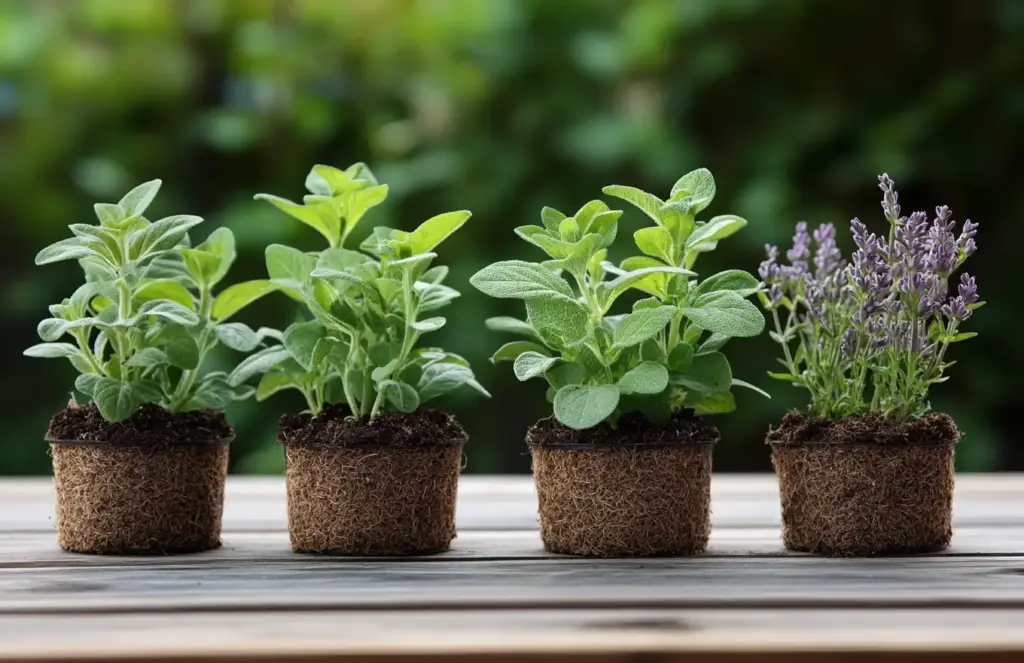
Choosing the right salvia plant for your garden goes beyond picking your favorite flower color. With such a wide variety of species available, the best choice depends on your local climate, garden space, soil conditions, and even your gardening goals—whether ornamental, culinary, or medicinal.
Factors to Consider Before Buying
- Climate Suitability:
Some salvias, like Scarlet Sage, flourish in hot, humid conditions, while others, such as Woodland Sage, are cold-hardy and better suited for temperate zones. Check the USDA hardiness zone recommendations on plant tags or nursery descriptions before purchasing. - Purpose and Use:
- Culinary: Go for common sage if you want a flavorful herb for cooking or teas.
- Ornamental: Choose vibrant varieties like Salvia guaranitica or Salvia splendens to add bold color and attract pollinators.
- Medicinal: Some species have historical uses in herbal remedies, including digestive and memory support.
- Available Space:
Salvias vary in size—from low-growing ground covers to tall, bushy perennials. Match the plant’s mature size with your garden layout to avoid overcrowding. - Soil & Sun Requirements:
While most salvias love full sun and well-draining soil, there are exceptions. Be sure to match species with the conditions you can provide.
What to Look for at the Nursery
When buying salvia plants from a garden center or nursery, inspect them closely to ensure you’re bringing home healthy specimens:
- Check the foliage: Leaves should be vibrant and free from discoloration, holes, or sticky residues.
- Inspect the stems: Look for strong, upright growth—not leggy or wilted plants.
- Examine the roots: If possible, gently remove the plant from its container. Roots should be white or light-colored and well-developed, but not tightly wound or root-bound.
- Avoid pests and diseases: Skip any plants with visible signs of aphids, mildew, or fungal spots.
By selecting the right salvia plant from the start, you’re setting yourself up for a thriving, low-maintenance addition to your garden.
☀️ 3. Essential Growing Conditions
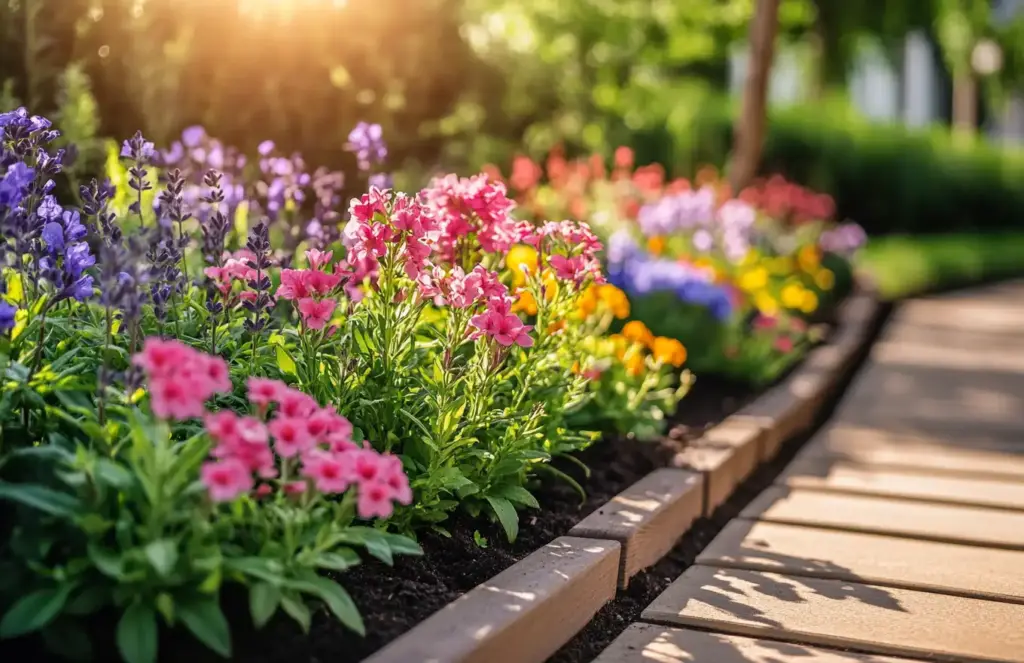
Once you’ve chosen your ideal salvia plant, setting it up with the right growing environment is key to its success. Salvias are generally tough and forgiving, but they’ll reward you with lush growth and blooms when their basic needs are met.
Light Requirements
Most salvia species are sun lovers.
- Full sun (6+ hours daily) is best for abundant flowering and strong growth.
- In very hot climates, a bit of afternoon shade can help reduce stress and prevent leaf scorch.
- If your salvia isn’t blooming well, inadequate sunlight is often the culprit.
Soil Preferences
Salvias thrive in well-drained soil with a slightly acidic to neutral pH (around 6.0–7.0).
- Poor drainage is the enemy—salvias hate soggy roots.
- If you have clay or compacted soil, amend it with organic matter like compost, aged manure, or peat moss.
- For sandy soils, enriching with compost can help retain moisture and nutrients.
Pro Tip: Raised beds and containers with good drainage are great for salvia, especially in areas with heavy rainfall.
Temperature and Humidity
- Temperature Tolerance: Salvias are fairly resilient, but most varieties prefer temperatures between 60°F and 85°F (15°C to 29°C).
- Perennial types may die back in winter but bounce back in spring.
- Humidity: In overly humid regions, salvias are susceptible to fungal diseases like powdery mildew.
- Ensure good air circulation by spacing plants appropriately and pruning crowded stems.
Creating the right foundation with light, soil, and air will make caring for your salvia plant much easier in the long run.
🪴 4. Planting Salvia
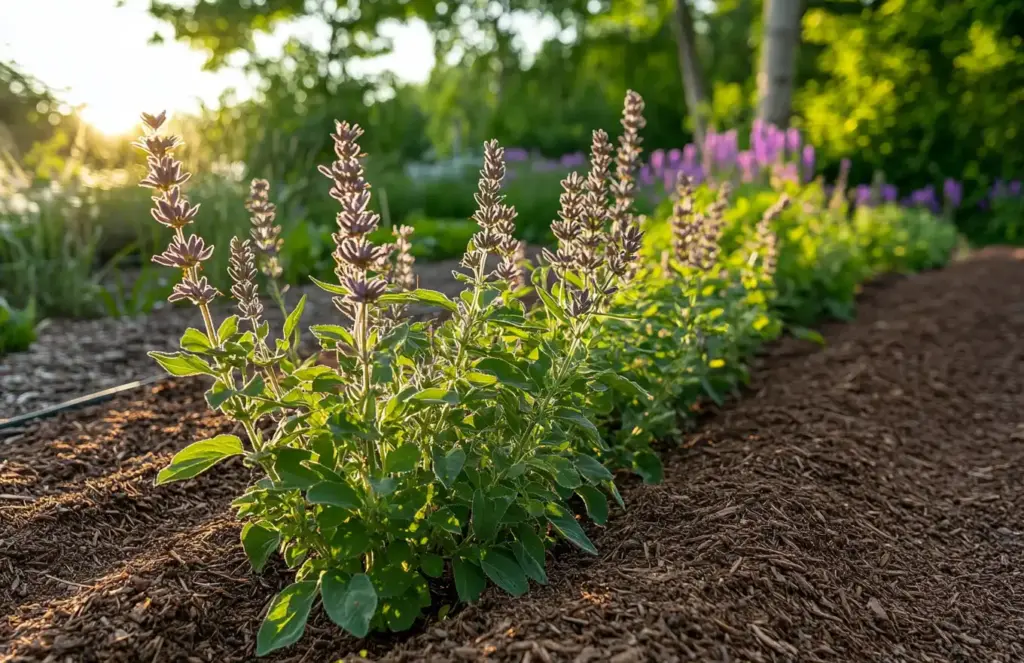
Planting your salvia plant properly is crucial for strong root establishment and long-term health. Whether you’re starting in garden beds or containers, following these best practices will set the stage for vibrant growth and seasonal blooms.
Best Time to Plant
- Spring is ideal in most regions—plant after the last frost when soil temperatures begin to warm.
- Fall planting is also suitable in warmer climates, giving roots time to establish before the next growing season.
- Avoid planting during peak summer heat, as young plants may struggle to adapt and become stressed.
Spacing and Layout
Proper spacing allows for air circulation and prevents disease:
- Space plants 12 to 36 inches apart, depending on the species’ mature size.
- Taller varieties work well at the back of garden beds, while compact or trailing types are great for borders or containers.
Step-by-Step Planting Guide
- Prepare the Soil:
Loosen the planting area to at least 12 inches deep. Mix in compost or aged manure to improve fertility and drainage. - Dig the Hole:
Make a hole twice as wide and just as deep as the plant’s root ball. - Place the Plant:
Gently remove the plant from its pot, loosen any tangled roots, and position it so the crown is level with the surrounding soil. - Backfill and Firm:
Fill the hole with soil, gently patting it down around the base. Avoid burying the stem too deeply. - Water Thoroughly:
Give your salvia a deep watering to help settle the soil and eliminate air pockets. Water at the base to avoid wetting the foliage.
💡 Tip: Mulch around the base with straw or bark to help retain moisture and suppress weeds, but keep mulch away from the stem to prevent rot.
A properly planted salvia plant is more likely to establish quickly and resist environmental stress.
💧 5. Watering and Feeding
Once your salvia plant is in the ground or pot, maintaining a balanced watering and feeding schedule is key to keeping it thriving. While these plants are relatively drought-tolerant once established, consistent care during the growing season ensures stronger blooms and healthier foliage.
How to Water Salvia
- Deep and infrequent watering is ideal. This encourages deep root growth, making plants more resilient during dry spells.
- Always water at the base of the plant—wet leaves can lead to fungal diseases.
- Avoid overhead watering, especially in the evening, which can trap moisture and promote mildew.
General Watering Guidelines:
- Newly planted salvia: Water 2–3 times per week for the first few weeks.
- Established salvia: Water once per week, depending on weather and soil moisture.
- Use your finger to test the soil—if the top 1–2 inches are dry, it’s time to water.
Signs of Watering Issues
- Overwatering: Yellowing leaves, soft stems, root rot.
- Underwatering: Wilting, dry leaf tips, stunted growth.
Feeding Salvia Plants
- Apply a balanced, slow-release fertilizer (such as 10-10-10) in early spring as new growth appears.
- A midseason boost with liquid fertilizer can promote extended flowering, especially in long-blooming or reblooming varieties.
- Avoid heavy nitrogen formulas, which may produce lush leaves at the expense of flowers.
🌿 Organic option: Mix compost or worm castings into the soil around the base in spring for a natural nutrient boost.
By fine-tuning your watering and feeding habits, you’ll help your salvia plant bloom abundantly while maintaining strong, disease-resistant growth.
✂️ 6. Pruning and Maintenance
Proper pruning and routine maintenance are essential to keeping your salvia plant healthy, shapely, and bursting with blooms. A little effort goes a long way—especially during the growing season.
Why Prune Salvia?
- Encourages repeat blooming
- Prevents legginess and maintains compact form
- Removes dead or diseased growth
- Improves airflow to reduce disease risk
How to Prune Effectively
- Deadheading: Remove spent flower spikes regularly to redirect energy into producing new blooms.
- Midseason Pruning: Cut back the plant by about one-third after the first bloom flush. This encourages a second round of flowering in many varieties.
- End-of-Season Cutback: After the first frost, trim perennials down to a few inches above the ground. This helps the plant conserve energy over winter and come back stronger in spring.
✂️ Use clean, sharp pruners to prevent disease spread. Sterilize between plants if you notice signs of infection.
Managing Common Pests and Diseases
Salvia plants are fairly resilient, but they can still fall victim to pests and pathogens if conditions are right.
Common Pests:
- Aphids
- Spider mites
- Thrips
- Whiteflies
Solutions:
- Spray with neem oil or insecticidal soap
- Introduce beneficial insects like ladybugs
- Rinse with a strong stream of water to dislodge soft-bodied pests
Common Diseases:
- Powdery mildew
- Root rot
- Leaf spot
Prevention Tips:
- Space plants to encourage airflow
- Water at the base (not overhead)
- Remove any infected foliage immediately and dispose of it (do not compost)
By staying on top of pruning and monitoring for pests and diseases, your salvia plant will continue to thrive with minimal intervention.
🌿 7. Propagation Techniques
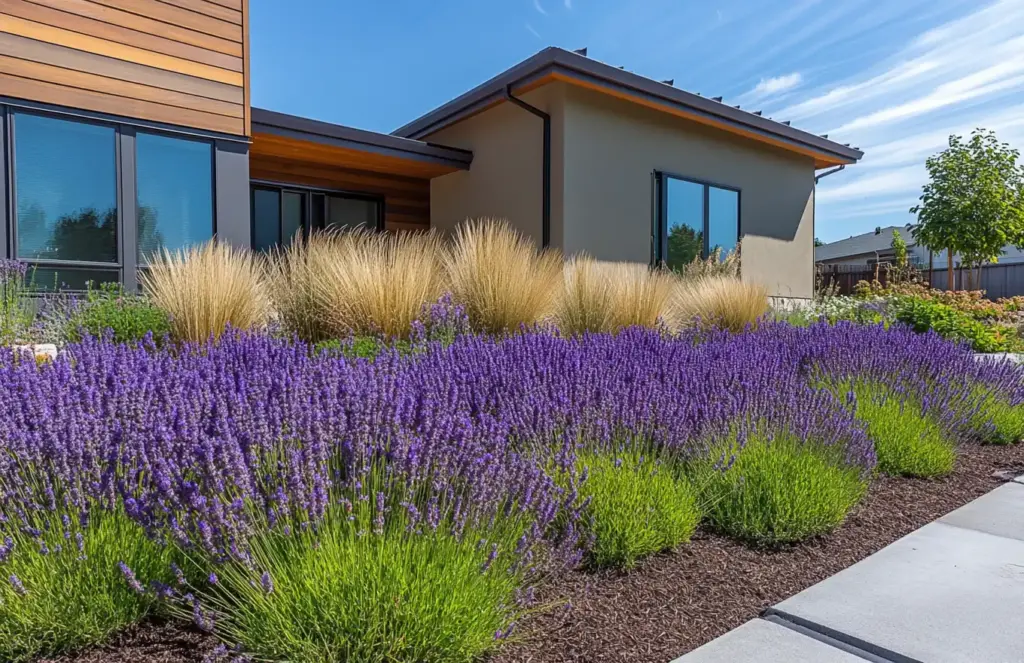
One of the most rewarding aspects of growing a salvia plant is how easy it is to propagate. Whether you want to expand your garden or share plants with fellow gardeners, salvia offers multiple methods of propagation—each suited to different needs and skill levels.
1. Growing Salvia from Seeds
Seed propagation works best for annual and some perennial varieties.
Step-by-Step:
- Collect mature seeds from dry flower heads.
- Sow indoors 6–8 weeks before the last frost in seed trays with a well-draining mix.
- Lightly cover the seeds with soil and keep them moist.
- Provide warmth (70°F/21°C) and light for germination.
- Transplant when seedlings have at least two sets of true leaves.
🌱 Pro tip: Salvia seeds benefit from bottom heat and consistent moisture for faster sprouting.
2. Propagating Salvia from Cuttings
This method is ideal for maintaining the traits of hybrid or named varieties.
How-To:
- Take 4–6 inch cuttings from healthy, non-flowering shoots in spring or early summer.
- Strip lower leaves and dip the cut end in rooting hormone.
- Insert into a moist, well-draining potting mix or perlite/vermiculite blend.
- Cover with a plastic dome or bag to maintain humidity.
- Keep in bright, indirect light and mist regularly until roots form (usually 2–3 weeks).
3. Division
Division is effective for mature, clump-forming perennial salvias.
Steps:
- Dig up the plant in early spring or fall.
- Gently separate the root ball into smaller clumps using your hands or a clean knife.
- Replant divisions immediately, watering well to help them settle.
💡 Tip: Only divide healthy, well-established plants. Avoid this method on woody or taprooted varieties.
With these propagation methods, your salvia plant can become a lasting part of your garden—and beyond.
🌸 8. Creative Uses of Salvia
Your salvia plant isn’t just a pretty face—it’s a garden multitasker! From landscape design to natural pest control and even culinary and medicinal use, salvia offers a variety of creative applications that make it a must-have for both ornamental and practical gardening.
In the Garden: Design & Display
- Borders and Beds: Use tall salvias like Salvia guaranitica as vibrant backdrops in perennial beds.
- Containers: Compact types such as Salvia greggii thrive in pots and hanging baskets.
- Pollinator Zones: Salvias are magnets for bees, butterflies, and hummingbirds—perfect for building a wildlife-friendly garden.
🌼 Pair salvias with coneflowers, lavender, or ornamental grasses for a dynamic, low-maintenance display.
Companion Planting Benefits
Salvia is more than decorative—it’s a garden ally.
- Attracts pollinators: Ensures good fruit and vegetable production.
- Deters pests: Its aromatic oils can repel nuisances like cabbage moths, carrot flies, and aphids.
- Plant around crops like tomatoes, carrots, and brassicas for natural protection.
Culinary and Medicinal Uses
Certain salvias, particularly common sage (Salvia officinalis), are both delicious and therapeutic.
Culinary:
- Add fresh or dried leaves to roast meats, stuffings, sauces, and teas.
- Infuse oils or vinegars for a flavorful boost.
Medicinal:
- Traditionally used to aid digestion, soothe sore throats, and support memory.
- Sage tea is known for its calming and anti-inflammatory properties.
🍵 Always research or consult a professional before using herbs medicinally, especially in large quantities.
These multi-purpose uses make the salvia plant not only an attractive garden staple, but a practical one as well.
🏁 9. Final Thoughts
Whether you’re planting for pollinators, culinary flair, or simply to brighten your borders, the salvia plant is one of the most rewarding additions to any garden. Its vibrant blooms, aromatic foliage, and low-maintenance nature make it a favorite for both new and seasoned gardeners alike. If you’re designing a pollinator-friendly space, consider pairing salvia with other full-sun perennial favorites or adding it to a cottage-style garden for timeless charm.
With the right soil, proper sunlight, and a little attention to watering, pruning, and propagation, your salvias can thrive for seasons on end. They’re just as at home in large beds as they are in container garden setups, and even find their place in your kitchen with culinary varieties like common sage.
So go ahead—give salvia a spot in your landscape. Whether you’re growing for beauty or function, this versatile plant is sure to impress.
❓ Frequently Asked Questions About Salvia Plant Care
1. Is salvia easy to grow for beginners?
Yes, most salvia varieties are very beginner-friendly. They’re low-maintenance, drought-tolerant once established, and rarely fussy about soil—as long as it drains well and they get plenty of sun.
2. How often should I water my salvia plant?
Water deeply once a week during the growing season. Newly planted salvias may need more frequent watering until established. Always check the top 1–2 inches of soil before watering again.
3. Does salvia need full sun or can it grow in shade?
Salvia thrives in full sun, needing at least 6 hours of direct light daily. Some varieties can tolerate partial shade, but they may produce fewer blooms.
4. When should I prune salvia plants?
Deadhead throughout the growing season to encourage continuous blooms. For perennial varieties, cut back by one-third after flowering, and do a more substantial prune in late fall or early spring.
5. What’s the best fertilizer for salvia?
Use a balanced, slow-release fertilizer in spring. Avoid high-nitrogen formulas, as they encourage leafy growth over flowers. Organic compost or worm castings are also excellent options.
🌿 Love gardening inspiration? Follow me on Pinterest for bold plant ideas, tips, and seasonal color!

